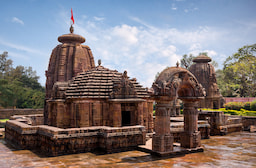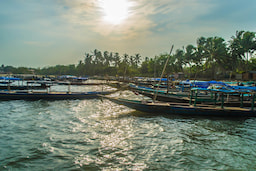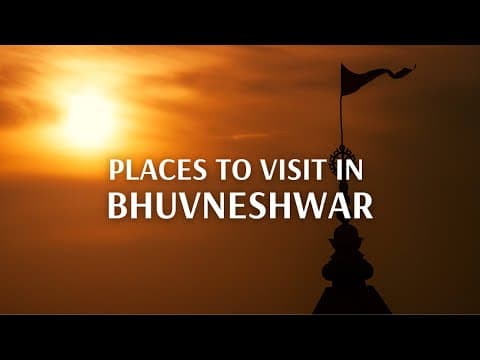- Home
- India Tour Packages
- Odisha
- Eastern Divine Connection
Eastern Divine Connection

Cities : Puri (1N),Bhubaneswar (1N),Calcutta (2N)
Sightseeing
- Mukteswara Temple
- Rajarani Temple
- Khandagiri and Udaygiri Caves
- Museum of Tribal Arts and Artefacts
- Lalitgiri-Ratnagiri-Udayagiri Buddhist circuit
- Explore the Stupas, Chaityas, Viharas
- Nandankanan Zoological Park
- Raghurajpur/Nayakpatna artisan village
- Kala Bhoomi
- Lingaraj Temple
- Dhauli Shanti Stupa (Dhaulagiri)
- Sun temple & interpretation centre at Konark
- Chandrabhaga beach
- Pipili appliqué work
- Sri Jagannath Puri Temple
- Koili Baikuntha
- Shree Gundicha Temple
- Loknath Temple
- Belur Math
- Howrah Bridge
- Dakshineswar Kali Temple
- Victoria Memorial
- Excursion trip to Gangasagar
- Kali Temple
- Birla Temple
Meals
- 5 Breakfast
- 5 Dinner
Notes:
- Rates Not valid during Festival, Peak Season & Blackout dates
COST SUPLEMENT:
- Entry fees: Indian-Rs.300/- P.P
- English speaking guide as per itinerary Rs.16500/-
- Non AC transport at Gangasagar (Kachuberia to Gangasagar & back) – Rs.2700/-
THE FOLLOWING POINTS ARE TO BE NOTED FOR CHILD RATE:
- Children above 10+ years will be charged 100% as per Adult Rate (EP)
- Children of 5+ to 10 sharing parent’s room will be charged as per CWB or CWNB
- Children below 5 years Complimentary
(Hotels are very strict with the child policy. Please carry the age proof so that it can be produced when asked for)
Notes:
- Entry Fees & Activity Cost Will Be Applicable In Above Sightseeing
SPECIAL NOTE:
- The parking area is 300mtrs away from Konark temple.
- The parking area is 1.5kms away from Jagannath temple. From there one can hire auto rickshaw/ cycle rickshaw/ battery auto rickshaw.
- Mobile phone, camera, leather items, bags tobacco masala, paan masala etc. are not allowed inside Jagnnath & Lingaraj temple.
- At Jagannath temple & Lingaraj temple we have our Panda, who will escort you inside temple, on request.
- Advisable to hire battery car at Nandankanan Zoological park for senior citizen, while visiting.
- Check-out time of Puri hotel is 08.00hrs & Check-in time is 10.00hrs.
- As per recent Govt. notification all guest need to submit valid ID proof like DL, Passport, Voter’s Card, Aadhar at the time of hotel check-in. Foreign guest need to fill-up ‘Form C’ at the time of check-in. PAN is not accepted as ID proof.
- There are no good restaurant/ Dhaba available at Gangasagar. Advisable to carry dry food & fruits along with you. Only local Bengali food is available
- Only govt. ferry runs between Harwood Point & Kachuberia in one hour interval. Seats are first-cum-first basis.
- Mandatory requirement of Covid negative certificate / final vaccination certificate for check-in into hotels in Odisha and for enter into the Jagannath temple & Lingaraj temple.
Day wise travel itinerary
- Day 1 :Arrival Bhubaneswar-Puri (70km/1.5hrs) Places to see
Jagannath temple, flag change ceremony of Jagannath temple which held every day before sunset. If time permits visit to Gundicha temple from outside. O/N-Puri. Note: 1. Jagannath temple remain open from 05.00 to 22.00hrs and close for 01hr between 12.00 to 14.00hrs. 2. Non-Hindu are not allowed inside the Jagannath temple & Gundicha temple 3. Mobile phones, cameras, leather items, paan, gutkha, tobacco, food items, bags are not allowed inside the Jagannath temple premises. 4. Be careful to monkeys at Jagannath temple. Keep your wallet & bags carefully
- Dinner
- Day 2 :Puri-Konark-Bhubaneswar (120 kms/2.5 hrs) Places to see
Chandrabhaga beach, Sun temple & interpretation centre at Konark (the UNESCO World heritage monument), Pipili appliqué market, Dhauli Buddhist shanti stupa, Lingaraj, Mukteswar & 64 Yogini temple. O/N- Bhubaneswar. Note: 1. Lingaraj temple remain open from 05.00 to 21.00hrs and close for 01hr between 11.00 to 13.00hrs. Devotee can go in to the garbhagriha (sanctum sanctorum) between 06.00 to 08.00hrs & 13.00 to 16.00hrs. 2. Non-Hindu are not allowed in to the Lingaraj temple. They can see from the specific platform.
- Breakfast
- Dinner
- Day 3 :Bhubaneswar-Kolkata and s/s. Places to see
Howrah bridge (drive pass), Belur Math (H.Q of Ramakrishna Mission), Dakhineswar Kali temple, The house of Rabindranath Tagore (campus of Rabindra Bharati University), Victoria Memoria. O/N-Kolkata Note: 1. Belur Math Opening time: 06.30hrs to 11.30hrs and 16.00hrs to 20.00hrs. Entry- Free. Ramkrishna Museum opening time: 06.30hrs to 11.30hrs and 16.00hrs to 17.30hrs. 2. Dakhineswar Kali temple: Opening time: 06.00hrs to 12.30hrs and 15.00hrs to 20.30hrs. 3. Victoria Memoria: Close on Monday, Opening time of Victoria Memoria Gallery – 10.00hrs to 17.00hrs. Entry fees: Rs.100/- Indian & Rs.500/- Foreigner
- Breakfast
- Dinner
- Day 4 :Excursion trip to Gangasagar (110kms/2.5hrs one way) Places to see
Gangasagar-an Island in the confluence of River Ganga and the Bay of Bengal and famous for Kapilamuni Ashram which is considered to be a great religious significance. O/N-Kolkata NB: Ganga Sagar Trip, our cars will drop the guest at Harud Point. From there they have to cross the river Muriganga by boat & from another end of the river local cars will be available to take them up to Sagar Island & back on spot payment. Our drivers will help the guest to board the boat to cross the river & will wait at the Harud Point for their return. On their return, the same car will pick them up & will drop at Kolkata. Schedule: 06.30hrs: Drive from Hotel for Harwood Point (130kms) 08.15hrs: Reach Harwood Point 08.30hrs: From Harwood Point takes a ferry (available at an interval of 01 hour) to reach Kachuberia 09.30hrs: From Kachuberia to Gangasagar by local Car (34kms) 10.30hrs: Reach Gangasagar 10.30hrs to 13.00hrs at Gangasagar 13.30hrs: Start for your return journey to Kolkata/ reach Kolkata by 19.30hrs.
- Breakfast
- Dinner
- Day 5 :Kolkata departure Places to see
Kali temple (Kalighat) -the great pilgrimage center of Hindu, Birla temple. If time permits free for shopping at different market. In-time proceed to railway station/airport for onwards journey.
Tour End. Note: 1. Birla temple: Opening time: 05.00am to 11.30am and 04.00pm to 09.00pm. Entry- Free.
- Breakfast
Sightseeing

Mukteswara Temple

Rajarani Temple

Khandagiri and Udaygiri Caves

Museum of Tribal Arts and Artefacts

Lalitgiri-Ratnagiri-Udayagiri Buddhist circuit
Lalitgiri, with its other name as Naltigiri, is the 1st century Buddhist complex in Orissa, which together with Ratnagiri and Udayagiri creates Puspagiri University which has a number of best sculptures of that age – like significant stupas and monasteries (viharas). As a renowned Buddhist pilgrimage, this ancient lush village Lalitgiri is a holy destination for a large number of Buddhism devotees. Numerous excavations done by the Archaeological Survey of India (ASI) have related this region with the origin point of Buddhism. ASI has been conducting such excavations since 1985 to today.
Ratnagiri has been a historical and religious significance that make it an ideal destination to explore. The small yet religious town in Jajpur District of Odisha is known for a huge monastery that relates to Mahayana Sect along with famous kings like Ashoka and others from Gupta Dynasty. Apart from its strong historical backgroung, Ratnagiri is also known for the flow of main rivers of Odisha known as Mahanadi, Brahmani, Kimiria and Birupa.
Udayagiri, an Orissa Buddhist complex to form Pushpagiri University along with udayagiri and Lalitgiri, and bears a number of significant stupas and monasteries (viharas). Udayagiri was referred as ‘Madhavapura Mahavihara’ in the history, as per the epigraphical artifact found in the region. A number of excavations have been conducted by the Archeological Survey of India (ASI) since 1958, which is still in continuity. The large excavation done 1997 to 2000 discovered the Udayagiri-2, the second part of Udayagiri. Several additional stupas and monasteries have been excavated here by ASI.

Explore the Stupas, Chaityas, Viharas
Buddhism in Orissa (ancient Kalinga) is as old as the religion itself. Pali texts refer to Buddha's association with Tapasu and Bhallika, two businessmen from Kalianga, who are said to be the first disciples of the Buddha. While Kapilvastu, Bodhgaya and Saranath are places associated with Lord Buddha's life, Orissa was more associated with his teachings. The Chinese Traveller Hieun T’sang records to have seen more than one hundred Buddist monasteries including excellent centers of learning :Pu-si-po-ki-li and Po-lo-mo-lo-ki-li during his visit to Kalinga in 7th century AD.
After the bloody Kalinga war in 261 B.C in Orissa (ancient Kalinga), Buddhism was virtually reborn and history took a u-turn as Emperor Ashoka became instrumental in spreading the message of peace across the globe and Buddhism was exported to Sri Lanka, Far-Eastern and South East Asian countries. Buddhism in all its forms and schools like Hinayana, Mahayana, Vajrayana, Kalachakrayana and Sahajayana flourished in Orissa in different periods almost unhindered from 3rd century B.C to 15th century AD. During the reign of Bhaumakara dynasty in Orissa (8th to 10th Century AD), Buddhism reached its zenith.
Magnificent monuments-Stupas, Chaityas, Viharas, colossal images of the Buddha and the Buddhist Pantheon and also a few of Emperor Ashoka built over centuries stand witness to the hoary past till today. Discovery of a golden casket containing the bone relics, probably of the Tathagata enhances the sanctity of the ancient land.
Modern Orissa is proud of carefully nurturing centuries old Buddhist Heritage spanning over 18 centuries spread through the length and breadth of the state
Though Buddhist sites lay scattered all over the State, Ratnagiri-Lalitgiri-Udayagiri complex has the largest concentration of Buddhist remains in Orissa. These three places constitute the Buddhist Triangle of the region, popularly known as Diamond Triangle of Orissa.
In close proximity lie a few more sites, the most prominent among which is the recently excavated site at Langudi.

Nandankanan Zoological Park

Raghurajpur/Nayakpatna artisan village
Raghurajpur is a heritage crafts village out of Puri district, India, known for its master Pattachitra painters, an art form which dates back to 5 BC in the region and Gotipua dance troupes, the precursor to the Indian classical dance form of Odissi.

Kala Bhoomi
Odisha Crafts Museum also known as Kalabhoomi is a museum in Bhubaneswar, Odisha, India, dedicated to the art and crafts of Odisha. It was inaugurated by the Chief Minister of Odisha, Naveen Patnaik, on 22 March 2018.

Lingaraj Temple
The Lingaraj Temple is an ancient shrine situated in the city of Bhuwaneshwar. Dedicated to Lord Shiva as the name suggests, the temple was built sometime in the 7th century by the King Jajati Keshari.Chandan Yatra or Sandalwood ceremony is another one of the main festivals of Lingaraj Temple.
Lingaraja Temple is a Hindu temple dedicated to Shiva and is one of the oldest temples in Bhubaneswar, the capital of the Indian state of Odisha, India. The temple is the most prominent landmark of Bhubaneswar city and one of the major tourist attractions of the state.
The temple in its present form dates back to the last decade of the eleventh century. There is evidence that part of the temple was built during the sixth century CE as mentioned in some of the seventh century Sanskrit texts. Fergusson believes that the temple might have been initiated by Lalat Indu Keshari who reigned from 615 to 657 CE. The Assembly hall (jagamohana), sanctum and temple tower were built during the eleventh century, while the Hall of offering (bhoga-mandapa) was built during the twelfth century. The natamandira was built by the wife of Salini between 1099 and 1104 CE. By the time the Lingaraja temple was completely constructed, the Jagannath (form of Vishnu) sect had been growing in the region, which historians believe, is evidenced by the co-existence of Vishnu and Shiva worship at the temple. The kings of Ganga dynasty were ardent followers of Vaishnavism, [shaivism] and [shaktism] and built the Jagannath Temple at Puri in the 12th century.
As per some accounts, the temple is believed to have been built by the Somavanshi king Yayati I (1025-1040), during the 11th century CE. Jajati Keshari shifted his capital from Jajpur to Bhubaneswar which was referred to as Ekamra Kshetra in the Brahma Purana, an ancient scripture. One of the Somavamsi queens donated a village to the temple and the Brahmins attached to the temple received generous grants. An inscription from the Saka year 1094 (1172 CE) indicates gifts of gold coins to the temple by Rajaraja II. Another inscription of Narasimha I from the 11th century indicates offer of beetel leaves as tambula to the presiding deity. Other stone inscriptions in the temple indicate royal grants from Chodaganga to the nearby village people.
K.C. Panigrahi mentions that Yayti I had no time to build the temple and it should have been initiated by his sons Ananta Kesari and Udyota Kesari (believed to be other names of Yayati II as well). The argument provided against the view is that is his weak successors could not have constructed such a magnificent structure.
Gallery
- victoria memorial

- Oddisha City
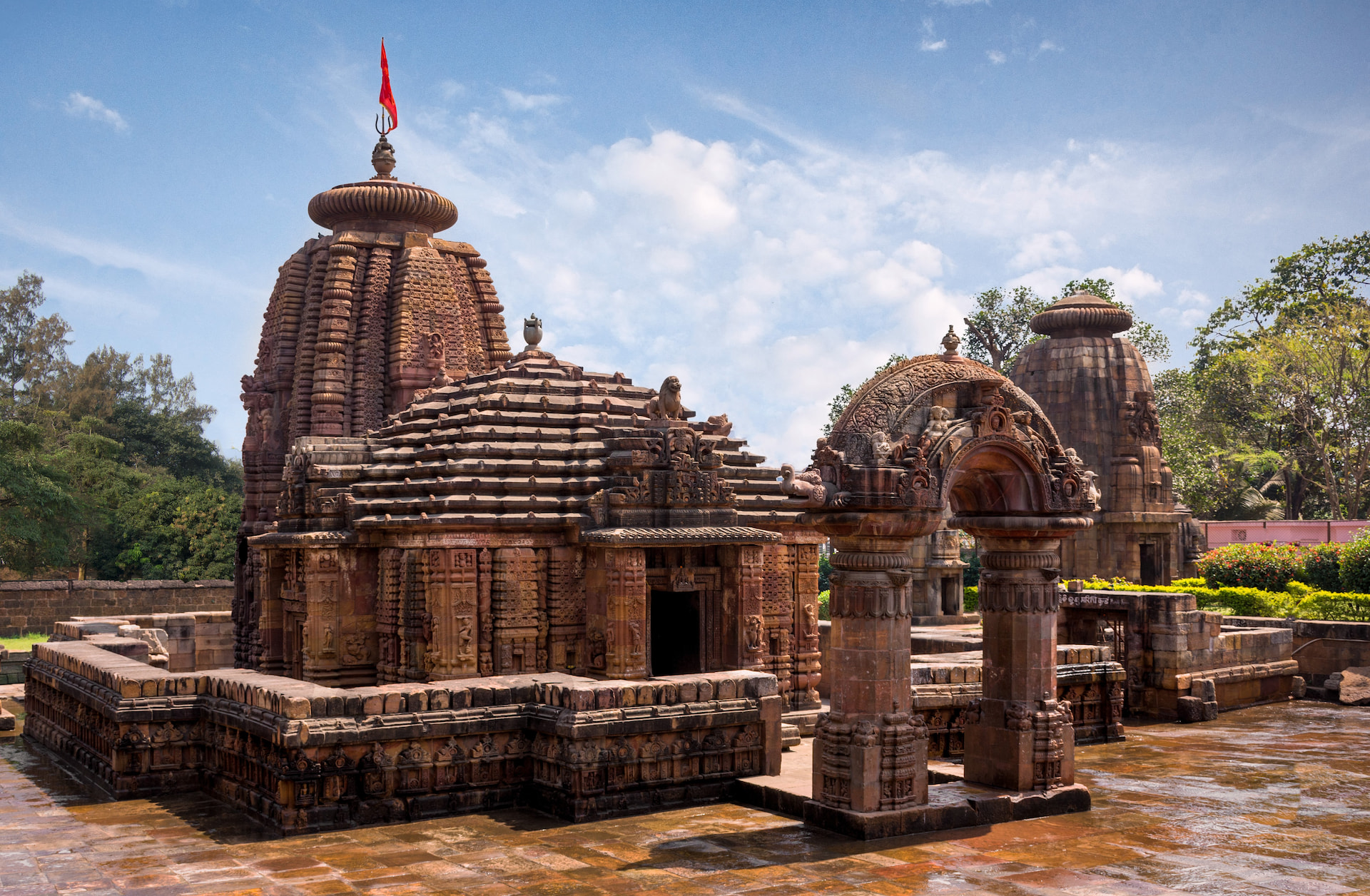
- puri
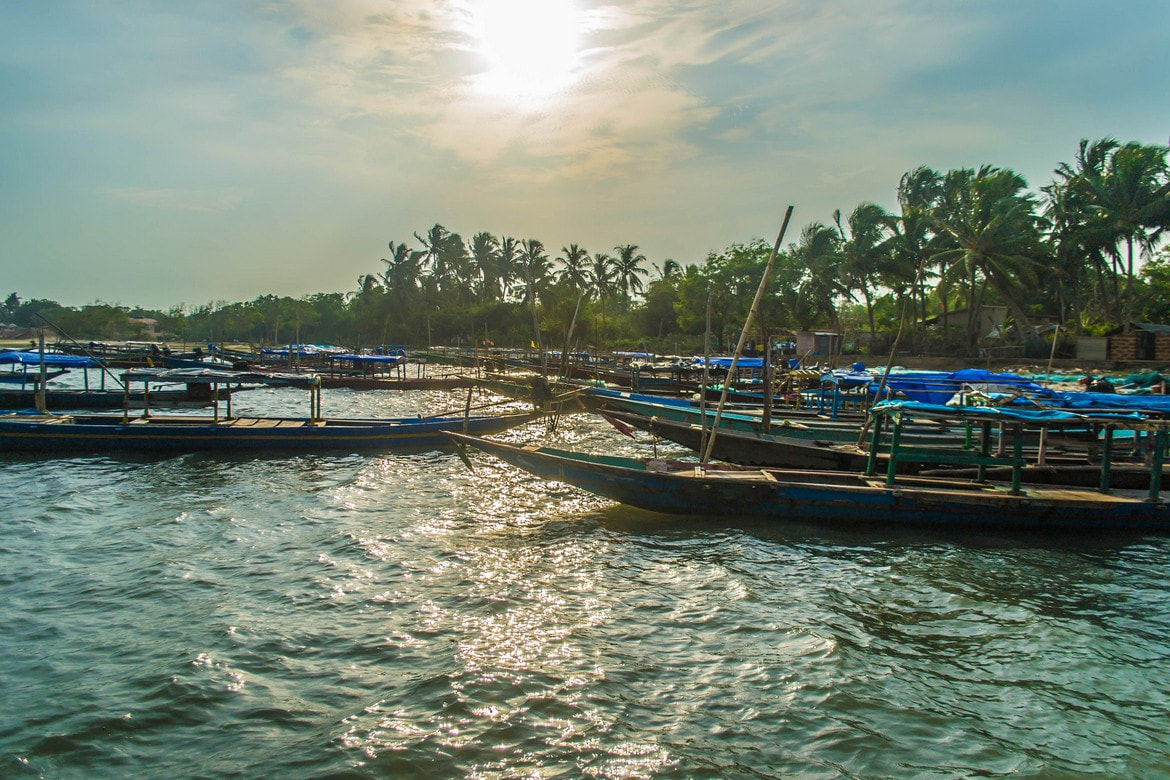
- Raj Bhawan

- Raj Bhawan

- high court

- high court

- victoria memorial

- victoria memorial

- Oddisha City

